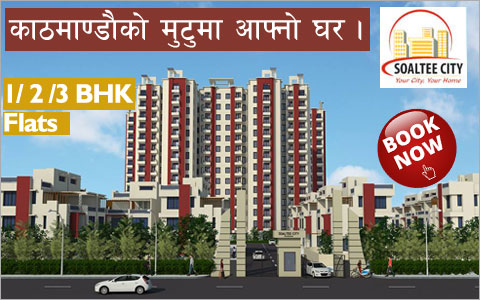National News
After the April 25 earthquake, there is a growing interest in the prefabricated building technology.
Not only the general people, even government authorities are considering using this technology, under which houses are manufactured off-site in advance which can easily be shipped and assembled.
A number of government institutions are issuing tender notices to develop prefabricated buildings. Nepal Rastra Bank (NRB), whose three building blocks have been damaged severely, has called for the registration of companies building prefab houses so that it could invite them to build its office and warehouses.
“We are going to build some of our offices spaces under prefab technology as a temporary arrangement,” said NRB Spokesperson Min Bahadur Shrestha. He said prefab structures will be built on the roof of NRB’s new Baluwatar-based building and on its land in Sano Thimi, Bhaktapur.
“We need prefab buildings until we have permanent office spaces of our own. Engineering for permanent building has started, but the construction will take time,” Shrestha said, adding the proposed Sano Thimi building will be used as store.
The NRB has said the total loss due to the damage to the buildings stands at Rs 5 billion, and reconstruction will require Rs 6 billion.
Similarly, The Department of Tourism has invited bids for the construction of a prefab office shed at Bhrikuti Mandap. Kathmandu Metropolitan City Office too has invited bids for building prefab wall panels at various wards of KMC and on its premises at Bagdurbar.
Other public agencies interested in the prefab technology include Nepal Electricity Authority (NEA) and Soil, Rock and Concrete Laboratory.
According to the Department of Urban Development and Building Construction (DUDBC), a number of prefab buildings are being developed within Singha Durbar.
“As some of the buildings have been damaged significantly, tents cannot be a long-term solution. Hence, buildings will be resurrected using prefab system,” Sambhu KC, Director General at DUDBC said. “Tender notice will be issued soon.”
The office of the Law Book Management House (Kanun Kitab Khana) too will function from a prefab building soon, KC said.
“Since it might take some time for issuing approval for permanent structures, prefab houses can be used as make-shift offices,” KC said, adding such structures can later be used for different purposes.
The DUDBC and Asian Development Bank (ADB) are holding talks for financial assistance to reconstruct government offices in 11 quake-affected districts, and they are considering prefab structures.
A recent meeting of the Industrial Promotion Board (IPB) approved the establishment industries manufacturing prefab structures. The Department of Industries (DoI) has said a number of companies are planning to get registered with a motive to develop prefab structures.
According to the Ministry of Home Affairs, 512,054 private homes and 2,656 government buildings have been completely damaged by the April 25 earthquake and subsequent aftershocks, while 280,730 private and 3,622 government buildings have been partially damaged.
source: the kathmandu post,21 june 2015
- 9th Nepal Buildcon International Expo 2024
- Real Estate Expo 2023
- NRB raises housing loan limit to encourage home constructions
- Nepal Rastra Bank (NRB) Monetary Policy 2080-2081
- New Price of Land in Kathmandu Metropolitan City, Nepal
- Capital Gains Tax Rate on Real Estate Transactions in Nepal 2080-81 ( 2023/24 )
- Kathmandu metropolis implements free parking policy for commercial buildings and hospitals

![[X]](https://www.housingnepal.com/images/popup-close-button.png)










































































































































































































































































































































































































 Facebook
Facebook
 Delicious
Delicious
 Digg
Digg
 Reddit
Reddit
 Stumble Upon
Stumble Upon









